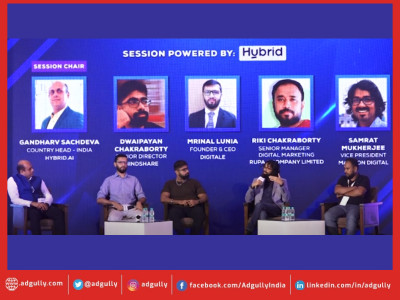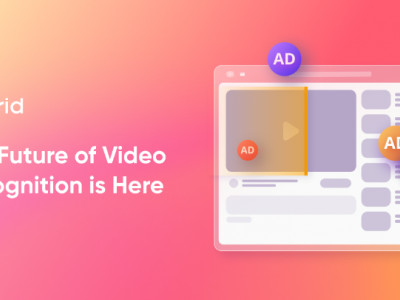The renaissance of contextual advertising – a sudden shift toward privacy protection
Contextual advertising has long been the backbone of the marketing mix, advances in technology and the sudden shift towards privacy-focused solutions, accelerated by the end of 3rd party cookies, have made contextual advertising again a focus.
What is contextual advertising and why is it important?
Contextual advertising is a type of targeting used in programmatic that allows you to place ads in appropriate places related to a specific brand. It segments advertising messages in terms of their subjects and enables you to display ads related to previously searched products or services. In addition, contextual targeting allows you to select relevant ads displayed on specific pages.
Google has announced that it will soon eliminate 3rd party cookies. In response, the industry began looking for privacy-safer alternatives to deliver campaigns with a high level of personalization without relying on user data. This is how contextual advertising was born, a technology with unique possibilities of targeting customers, 100% respecting their privacy.
Why should publishers choose contextual advertising?
Because it is a type of advertising that is relevant to the content of the page, for example, a user may come across an advertisement for a cream while browsing a beauty blog on their computer or a website dedicated to makeup trends. Contextual advertising works thanks to contextual targeting, which is a mechanism that links ads to relevant websites through keywords. Search engines also use contextual targeting to display ads in search results, based on the keywords used to search.
According to the IAB EUROPE report "Guide to Contextual Advertising- 07/2021", 69% of consumers would be more likely to see your ad if it was related to the content they read.
67% say they are open to viewing contextually matched ads for new brands.
44% tried a new brand because they saw a matched ad next to the content they were reading.
How does contextual advertising work?
Simply put, contextual targeting occurs on the Display Network so that page content is matched to relevant ads based on keywords and topics. When a user visits a website, the ads displayed there are based on these keywords. In addition, the contextual approach offers opportunities to identify negative areas and topics that brands want to avoid. This has helped address the brand's long-standing safety concerns - Brand Safety - in cases where ads appear alongside inappropriate content.
Examples of contextual advertising:
Native advertising
Native ads are a form of contextual advertising. They are "integrated" with the page content because they appear where they are most naturally relevant. The result is a harmonious match to the look and nature of the site. A great example of native contextual advertising is the In-Image Ads ad format from VOX.
"At a time when consumers are increasingly protecting their privacy and value the quality of the advertisements offered to them, it has become obvious that traditional targeting strategies are no longer effective enough to generate engagement.
Thanks to this, contextual targeting has become more important than ever. It should be emphasized here that the AI technology (e.g. computer vision) enables the recognition and categorization of most elements: texts, photos as well as audio and video materials " – says Adam IwiÅ„ski, CEO of VOX
Contextual video advertising
Today, video advertising can also rely on contextual advertising technology. This technology analyzes the video posture and allows marketers to insert their ads at the right moment.
In-stream video ads are relevant to the content played in the video, which guarantees that we see the ad as matched. Publishers need content and a video player on their site to put in-stream video ads. Publishers without video content can also monetize video ads on their sites without in-stream video ads.
Contextual technology analyzes the publisher's content and media and links the ad to the appropriate website. As a result, publishers can serve highly engaging, non-intrusive, and privacy-friendly video advertisements on their sites.
What are the advantages of contextual advertising?
Privacy
Contextual advertising respects the privacy and does not rely on cookies or other identifiers. With increasingly stringent security regulations and consumers demanding greater transparency in the use of their data, publishers can monetize their ads without compliance issues.
Interaction/involvement
In context, relevant ads create a smoother and more enjoyable user experience that encourages interaction. Contextual advertising is remembered almost 2 times more than context-free advertising, and the interaction is 15% higher.
Better user experience
Contextual advertising is beneficial for the user experience as it sees the ads that are relevant to them.
Data strategy
The shift from 3rd party data to 1st party data represents another opportunity for contextual advertising. According to the IAB survey, 57.1% of marketers have already increased the use of first-party or contextual data in targeting. In addition, brands can leverage their first-party data and contextual targeting capabilities, allowing publishers to build long-term relationships with advertisers.
Increased profit
Contextual algorithms favor higher quality and longer content. As a result, publishers can achieve higher profits in the long run. This encourages publishers to increase their investment in contextual advertising.
Brands are starting to opt for contextual advertising as 3rd party files are gradually phased out. It is becoming increasingly clear that the main factor driving the popularity of contextual advertising is its effectiveness. Industry insights suggest that contextual intelligence is better than behavioral analytics and is more effective at reaching your audience. It is also safer for brands. And for publishers whose content is sometimes blocked by keyword blacklists, a better understanding of the text opens up new opportunities. The future of contextual advertising looks very promising. Advertisers can effectively promote their brands while maintaining a positive user experience, and publishers are faced with the possibility of reaping the benefits in the long run.









Share
Facebook
YouTube
Tweet
Twitter
LinkedIn